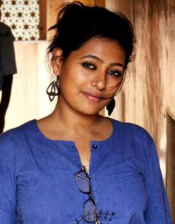

SNAP 2017 is barely 2 weeks away! The MBA entrance exam, Symbiosis National Aptitude Test (SNAP) is divided into four sections which have undergone some changes this year. The SNAP 2017 preparation strategy will also be slightly different as compared to last year.
- The General English section consists of reading comprehension, verbal reasoning and verbal ability.
- The next section is the Quantitative, Data Interpretation and Data Sufficiency section.
- The third section is that of General Awareness, and now consists of questions from Current Affairs of last 2 years
- The fourth section has questions Analytical and Logical Reasoning.
Except for the Current Affairs section which would have 30 questions, the rest of the three sections would have 40 questions each. The SNAP test is of 150 marks in total.
How to prepare for SNAP 2017?
SNAP 2017 is scheduled for 17 December, 2017. Here are a few preparation tips to get you going for this national level MBA entrance exam:
SNAP is different from the other competitive exams for MBA. It is a speed-based test as opposed to CAT, which is an accuracy-based test. SNAP has 150 questions which need to be solved in two hours, and questions are generally considered to be easier than CAT, XAT and other examinations. SNAP requires the OMR sheet to be answered with blue or black ball point pen only, so make sure that you are sure of the answer before marking it because you won’t be able to go back and erase it.
- The General Knowledge section has the lowest cut-off among the four sections, but even advanced candidates struggle in this section. Preparing for SNAP’s GK section is now going to be different from 2016 onward especially since there are not going to be any static GK questions. Instead, only your knowledge of current affairs from the last 2 years will be assessed. Also, the number of questions has been reduced.
- You should prepare to be well versed in current affairs, both national and international. General Knowledge books and magazines can serve as study material for this section as well. SNAP, being a B-school’s test, is known to have questions in this section which are business inclined. So give special attention to any recent national/ international business news. The General Knowledge section can cover questions from common areas like sports, history, economics, Indian constitution, geography, business mergers and acquisitions and politics. For the General Awareness section, in addition to regularly reading the newspaper, it is advisable to learn from magazines, reading the Manorama and CSR Year Book (again, focus just on the last 2 years.)
- Though there is no prescribed syllabus, but after analysis of previous question papers, the syllabus can be somewhat deduced. The General English section may have reading comprehension, questions on English usage and vocabulary like spelling, synonym-antonyms, fill-in-the-blanks and sentence equivalence. In Grammar, questions may arise from active and passive voice, tenses and parts of speech.
- The Quantitative Ability section may contain questions in the areas of arithmetics, algebra, geometry, mensuration, and trigonometry like Time Speed and Distance, Work and Time, Percentages, Profit and Loss, Number Systems, Set Theory, and Ratio and Proportion. The section on Data Interpretation may have generic questions based on bar graphs, pie charts, and line graphs.
- The section on Analytical and Logical Reasoning also now has a reduced number of questions (from 60 to 40) & may have questions from areas like coding-decoding, Venn diagrams, cubes, verbal analogy, double line distribution, blood relations and fact inference judgements.
The questions are fairly easy, and there is no sectional cut-off, so attempt as many questions as possible. However, it is wise not to compromise on accuracy while attempting the maximum number of questions as there is negative marking, and this can bring down the score.
In terms of the topics covered, the fundamental concepts should be clear. Topics in Mathematics taught till tenth grade should be clear and made strong. To be able to solve questions correctly and quickly, intense and regular practice is required, especially in the Quantitative, Data Interpretation and Data Sufficiency section. Solving questions from different books, and taking multiple mock tests, solving SNAP previous year question papers, especially those which follow the SNAP pattern, are good practice techniques.
Related Links

About Nishatha Abraham Bijeesh

Latest
Articles
CBSE Compartment Result 2023 OUT: Click For Direct Link
Home CBSE Compartment Result 2023 OUT: Click For Direct Link The CBSE 10th Compartment Result 2023 is expected to be
IIT Roorkee Launches Professional Certification Program in Product Management
Home IIT Roorkee Launches Professional Certification Program in Product Management The fees five-month long programme is for Rs 1,40,000 +
Join Our Whatsapp Community
Lorem ipsum dolor sit amet, consectetur adipisicing elit, sed do eiusmod tempor incididunt ut labore et dolore magna aliqua. Ut enim ad minim veniam, quis nostrud







